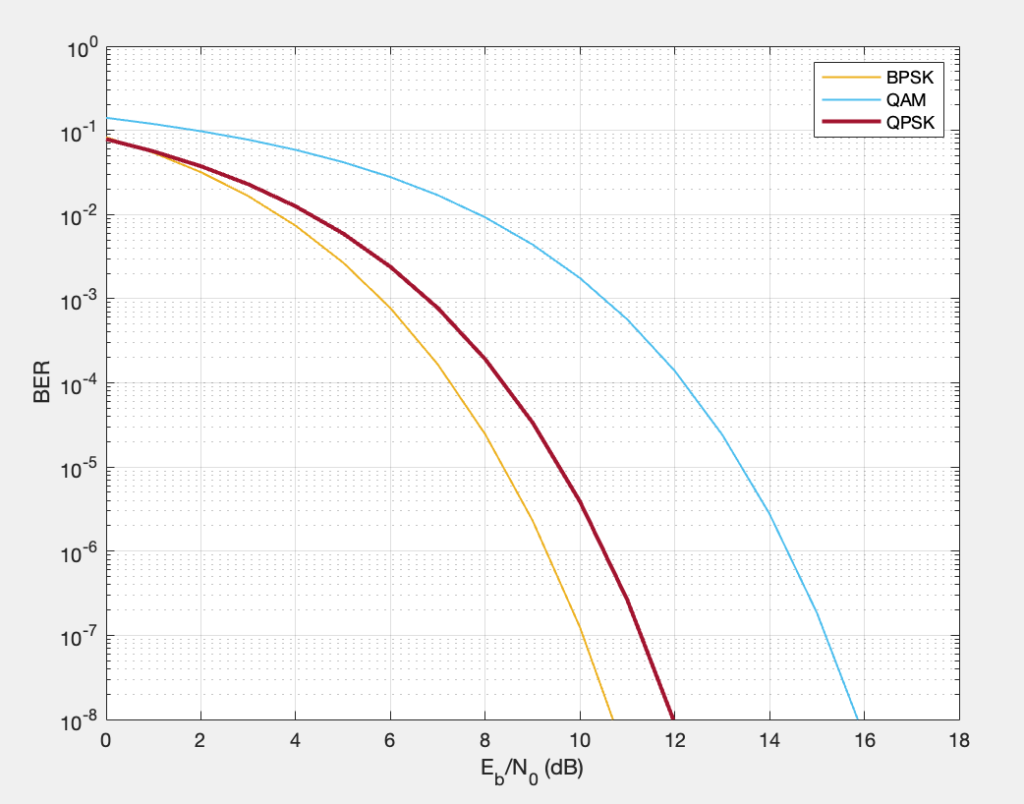
Adaptive Modulation Methods in Wireless Communication Systems
This article compares and contrasts the performance of three commonly used adaptive modulation methods, QPSK, BPSK, and QAM, in terms of bit error rate (BER) through simulated methods. Simulation results show that QAM achieves higher spectral efficiency but is more vulnerable to channel noise, while BPSK and QPSK have lower spectral efficiency but better resilience to noise. This analysis provides valuable insights into the trade-offs and limitations of these adaptive modulation methods and can help in selecting the appropriate modulation schemes for different wireless communication applications.
Introduction to Adaptive Modulation in Wireless Communication
Adaptive modulation is a technique used throughout many different types of wireless communication systems that allows for the efficient use of spectral resources by adjusting the modulation technique according to the conditions of the channel. In adaptive modulation, the modulation method is selected dynamically based on the channel quality information to improve the spectral efficiency and minimize the bit error rate (BER)(6). There are several modulation schemes commonly used in wireless communications, including QPSK, BPSK, and QAM. These modulation schemes are easily visually represented through a constellation diagram, see figure 1.

Figure 1 Shows the constellation diagram of a QPSK and QAM modulation system.
Understanding Key Modulation Techniques: BPSK, QPSK, and QAM
QPSK (Quadrature Phase Shift Keying) is a type of digital modulation scheme that uses four phases to transmit two bits of digital data per symbol. The four phases are 0, 90, 180, and 270 degrees, and each phase shift represents a different combination of two bits. QPSK offers higher spectral efficiency compared to BPSK but is more sensitive to noise and interference.
BPSK (Binary Phase Shift Keying), however, is a simpler modulation scheme that uses two phases, 0 and 180 degrees, to transmit one bit of digital data per symbol. BPSK has lower spectral efficiency compared to QPSK but is more resilient to noise and interference.
QAM (Quadrature Amplitude Modulation) is a more advanced modulation scheme that uses both phase and amplitude to send multiple bits of data per symbol. QAM can reach higher spectral efficiency than both QPSK and BPSK by transmitting more bits per symbol, but at a cost of increased sensitivity to noise and interference.
Spectral Efficiency vs. Noise Resilience in Modulation Methods
In wireless communication systems, the choice of modulation methods depends on the channel conditions, data rate requirements, and spectral efficiency goals. Essentially, higher-order modulation methods, like QAM, are used when channel conditions are good and high data rates are required, while lower-order modulation methods like QPSKand BPSK are used in more challenging channel conditions.
Simulation Setup: Analyzing BER with MATLAB Simulink
To compare the bit error rate (BER) of BPSK, QPSK, and QAM modulation schemes, I simulated these schemes using MATLAB Simulink. The Simulink model consisted of a source of binary data, a modulator block, an AWGN (Additive White Gaussian Noise) channel block, and a demodulator block. The modulator block was implemented using the appropriate modulation scheme, and the demodulator block was configured to recover the transmitted data based on the received signal.
The simulation was carried out for different signal-to-noise ratios (SNRs) ranging from 0 to 18 dB, and the BER was measured for each modulation scheme at each SNR value. To verify the correctness of the Simulink model, I first simulated the BPSK modulation scheme and compared its BER performance with the theoretical BER calculated using the Q function.

Performance Analysis: BER Results Across Different SNR Values
The simulation results matched the theoretical calculations, which validated the Simulink model. We then simulated the QPSK and QAM modulation schemes using the same Simulink model, and the BER performance was compared with that of BPSK at different SNR values. The results were analyzed to determine the performance trade-offs between the modulation schemes, including their relative BER performance and spectral efficiency, see figure 2.

Overall, the Simulink simulation provided a reliable and efficient method to compare the BER performance of different modulation schemes and validate their theoretical performance characteristics.
Conclusion: Key Takeaways from Adaptive Modulation Simulations
In conclusion, I compared and contrasted the performance of three commonly used adaptive modulation methods, namely QPSK, BPSK, and QAM, using MATLAB Simulink simulation. Our simulation results showed that QAM achieved higher spectral efficiency but was more susceptible to noise, while BPSK and QPSK had lower spectral efficiency but better noise resilience. The trade-offs between spectral efficiency and noise resilience should be considered when choosing a modulation scheme for wireless communication systems.
The Simulink model provided an effective method to compare the BER performance of the different modulation schemes, and the results were consistent with theoretical calculations. The simulation results revealed that for high SNR, QAM outperformed BPSK and QPSK in terms of BER, while for low SNR, BPSK and QPSK provided better BER performance.
Article Written by

Reid Shillingburg
CKC EMC Test Engineer
